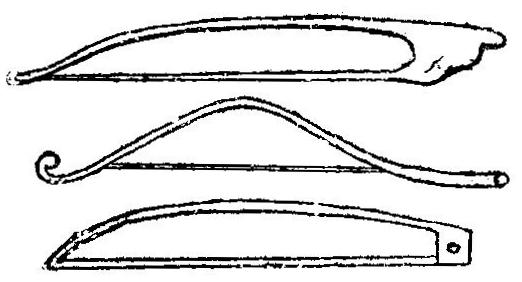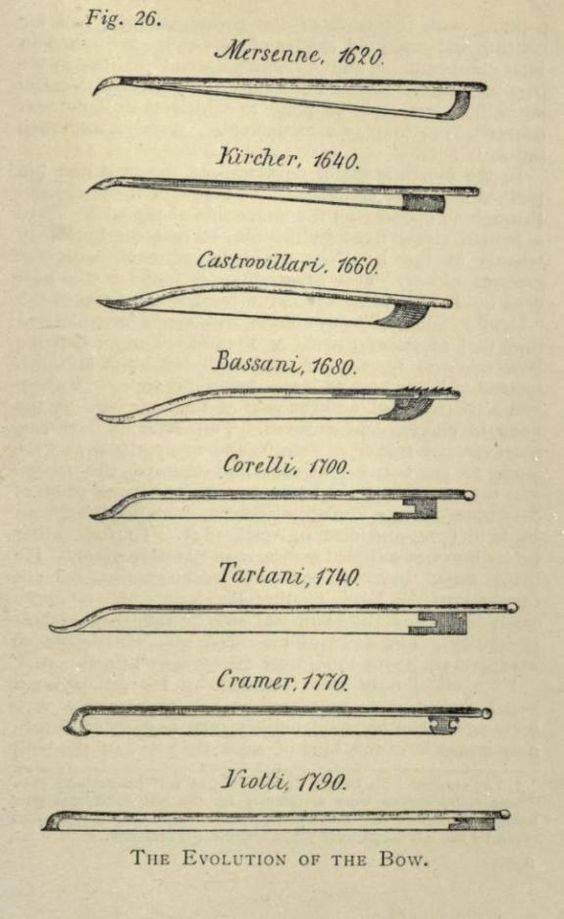Post History
Tradition! That bow you've got for your psaltery is an attempt at making a bow in the ancient style. Very early bows were highly arched and sometimes had handles. A psaltery bow kind of looks some...
#1: Initial revision
### Tradition! That bow you've got for your psaltery is an attempt at making a bow in the ancient style. Very early bows were highly arched and sometimes had handles. A psaltery bow kind of looks something like the first one in the image.  And the shape of the bow has kept on changing.  The shape itself doesn't have quite as much effect -- on a bowed psaltery! -- as the amount of horsehair that contacts the string and how well you rosin the bow. And of course how well you regulate stroke and pressure. A psaltery bowstring is generally narrow. Maybe 0.25 to 0.3 cm in width. This tends to make a string sound thin and nasally. A violin bow has hair that's almost a centimetre in width. The extra hairs will smooth out the sound little. (Though from practical experience with my own psaltery, no bow in the world will really make the instrument sound very nice at all!). Whichever bow you choose, make sure you rosin it well! Too little or too spotty and the string won't sound. The choice is up to you, but I'd probably go with a nice psaltery bow. They are pretty and relatively inexpensive and, as you note, there's not a lot of wiggle room between the pegs! If you do choose a violin bow, look for the smallest one you can find, like a 1/16 size. It's about the same length as a psaltery bow and won't be so unweildy.


















